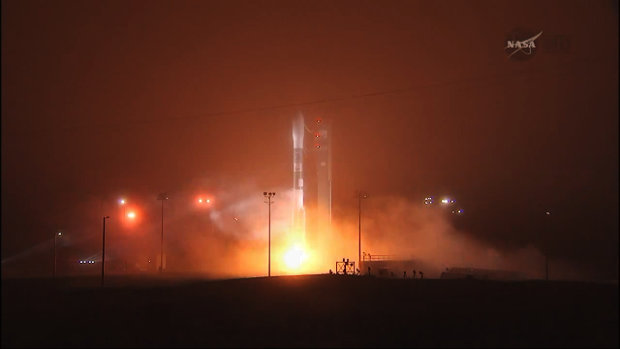
The Orbiting Carbon Observatory 2 (OCO-2) satellite just blasted off from the Vandenberg U.S. Air Force Base in California on a Delta II 7320-10 rocket. After about an hour it regularly separated from the upper stage of the rocket and deployed its solar panels after entering a polar sun-synchronous orbit.
The original Orbiting Carbon Observatory (OCO) mission was supposed to start in 2009 but after the launch, which took place on a Taurus-XL 3110 rocket, the payload fairing used as a protection for the satellite didn’t separate in the last phase of ascent. The additional mass prevented the satellite from reaching orbit and as a consequence it fell down into the Indian Ocean.
This type of carbon dioxide monitoring is needed more than ever so a second satellite lost almost identical to the lost one was built. Due to a further failure of a launch of a Taurus-XL rocket it was decided to use a Delta II rocket to put the OCO-2 satellite into orbit, a type of rocket old but reliable.
Although measurements of carbon dioxide in the atmosphere are more and more accurate, there’s still much we don’t know about the processes that govern its concentration. For example, we don’t know exactly where all the carbon dioxide comes from and where it ends when it leaves the air.
This information is critical to understand the impact of human activities on the climate because carbon dioxide is the main greenhouse gas. Consequently, knowing the details of its cycles and its movements will help us assess plans to mitigate the greenhouse effect or to adapt to climate change.
The OCO-2 satellite will allow to obtain approximately 100,000 measurements per day relative to carbon dioxide in the atmosphere all over the world. These measurements will be combined with those of ground-based instruments to provide scientists with the necessary information to make the most accurate analysis ever made.
The measurement of the carbon dioxide won’t be made directly but using three spectrometers which calculate its concentration by measuring the sunlight reflected from the surface of the Earth. It’s a type of measurement that is as unique as fingerprints.
The OCO-2 satellite’s primary mission has an expected duration of two years with the possibility of a further extension always possible when a satellite is still working and there’s the budget to continue the mission. In this case, it’s a really important and long-awaited mission to learn more about the situation of the carbon dioxide in the atmosphere.
[ad name=”AmazonScience”]


Permalink
Permalink